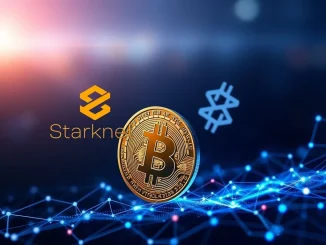
The cryptocurrency landscape is constantly evolving, with traditional businesses increasingly recognizing the transformative power of blockchain. In a significant move that has caught the attention of the crypto world, Mega Matrix, a company previously focused on manufacturing and logistics, has announced a monumental shift. They’ve successfully raised a staggering $16 million to pivot entirely towards building cutting-edge stablecoin infrastructure.
Mega Matrix’s Bold New Direction: From Manufacturing to Digital Assets
In a strategic move set to redefine its corporate identity, Mega Matrix Corporation has completed a $16 million private placement. This substantial funding marks a definitive transition from its long-standing traditional manufacturing and logistics operations into the burgeoning stablecoin infrastructure sector. The capital infusion is earmarked for developing a suite of sophisticated blockchain-based solutions, including:
- Advanced Treasury Systems: Designed to manage corporate assets with greater transparency and efficiency on the blockchain.
- On-Chain Yield Mechanisms: Tools to help institutions generate income from their digital holdings within decentralized finance (DeFi) ecosystems.
- Robust Governance Frameworks: Tailored specifically for corporate stablecoin strategies, ensuring secure and compliant operations.
This strategic pivot aligns with the escalating demand for low-volatility digital assets within corporate finance and the broader DeFi landscape. Mega Matrix’s existing NYSE listing (NYSE: MPU) is expected to provide a crucial platform, lending credibility and a familiar regulatory framework as the company executes its ambitious shift into crypto infrastructure.
Why Stablecoin Infrastructure? Addressing Corporate Treasuries’ Needs
The decision by Mega Matrix to focus on stablecoins is a direct response to the evolving needs of modern corporate treasuries. Businesses are increasingly seeking alternatives to conventional banking systems for cross-border payments, low-risk transactions, and exploring DeFi tools. Stablecoins, with their inherent low-volatility profile, offer a compelling solution. The financing round, backed by crypto-native investors and specialized funds, empowers Mega Matrix to begin constructing essential tools for:
- Managing Stablecoin Portfolios: Providing businesses with the means to efficiently hold and manage their stablecoin assets.
- Optimizing Yield Generation: Creating mechanisms to earn passive income from stablecoin holdings, addressing liquidity challenges and enhancing returns for institutional clients.
The firm is also actively negotiating partnerships with major stablecoin issuers, aiming to build automated yield systems, though specific names remain undisclosed. This initiative underscores a broader industry interest in decentralized autonomous organization (DAO) structures, as Mega Matrix plans to develop governance token frameworks to ensure the secure and fair operation of these new tools.
Navigating the Future of Blockchain Finance
Mega Matrix’s entry into blockchain finance highlights a significant trend among traditional firms repositioning themselves to capitalize on the expanding market for stablecoins. By integrating stablecoin-centric solutions, the company targets key areas where digital assets can offer superior efficiency and cost-effectiveness compared to traditional finance. However, this promising sector is not without its hurdles. The success of Mega Matrix’s strategy will heavily depend on its ability to navigate several critical challenges:
- Regulatory Scrutiny: The evolving and often complex global regulatory landscape for digital assets.
- Compliance Risks: Ensuring adherence to anti-money laundering (AML), know-your-customer (KYC), and other financial regulations.
- Interoperability: Seamless integration with existing financial systems and other blockchain networks.
Beyond these, execution speed, technological differentiation, and the ability to attract substantial institutional demand will be pivotal. The firm’s emphasis on governance tokens suggests a potential role in future DAO frameworks, although the large-scale viability and adoption of such structures for corporate use cases remain largely untested.
Comparing Strategies: Mega Matrix vs. Bitcoin-Focused Corporate Treasuries
While many companies have embraced digital assets, Mega Matrix’s approach to corporate treasuries stands out due to its distinct focus on stablecoins. This contrasts with well-known examples such as MicroStrategy and Marathon Digital, which primarily leverage Bitcoin for long-term asset management and exposure to the broader crypto market. Similarly, companies like SharpLink Gaming and Bit Digital utilize Ethereum’s flexibility for broader blockchain integration and yield generation. Mega Matrix’s strategy, however, emphasizes stablecoins for their low-risk profile, enabling firms to:
- Minimize exposure to crypto market volatility.
- Explore decentralized finance opportunities with reduced price fluctuation.
- Facilitate efficient and predictable cross-border transactions.
This nuanced approach allows companies to gain the benefits of blockchain and DeFi without the significant price swings associated with more volatile cryptocurrencies like Bitcoin or Ethereum. The firm’s commitment to developing governance tokens further suggests a potential pathway toward decentralized decision-making frameworks, though its full implications for large-scale corporate adoption are still unfolding.
The Crypto Pivot: A High-Stakes Bet on Decentralized Finance
The $16 million raise positions Mega Matrix as a significant new player in a high-reward, high-risk segment of the crypto market. This bold crypto pivot is a testament to investor confidence in the long-term potential of blockchain-based finance and the strategic importance of stablecoins as a cornerstone of decentralized ecosystems. While the company’s NYSE listing offers distinct regulatory advantages and enhanced transparency, its transition into stablecoin infrastructure requires navigating considerable technical complexities and intense market competition.
The current lack of detailed disclosures regarding specific use cases or confirmed partnerships in the initial materials leaves some room for uncertainty about the project’s immediate scope and potential impact. Nonetheless, this investment underscores a growing trend: traditional businesses are not just observing the crypto space but actively re-shaping their core operations to participate in and benefit from the decentralized future. Mega Matrix’s journey will be a fascinating case study in how established firms can successfully adapt and innovate within the dynamic world of digital assets.
Frequently Asked Questions (FAQs)
What is Mega Matrix’s new primary focus?
Mega Matrix is transitioning from traditional manufacturing and logistics to developing stablecoin infrastructure, focusing on blockchain-based treasury systems, on-chain yield mechanisms, and governance frameworks for corporate stablecoin strategies.
How much capital did Mega Matrix raise for this transition?
Mega Matrix successfully completed a $16 million private placement to fund its pivot into the stablecoin infrastructure sector.
Why are stablecoins considered important for corporate treasuries?
Stablecoins offer low-volatility digital assets, making them suitable for corporate finance needs like cross-border payments, low-risk transactions, and exploring DeFi tools without significant exposure to crypto market volatility.
What challenges does Mega Matrix face in this strategic pivot?
The company faces challenges including navigating regulatory scrutiny, ensuring compliance with financial regulations, and achieving seamless interoperability with existing financial systems and other blockchain networks.
How does Mega Matrix’s stablecoin strategy differ from companies focused on Bitcoin?
Unlike companies like MicroStrategy and Marathon Digital that use Bitcoin for long-term asset management and market exposure, Mega Matrix emphasizes stablecoins for their low-risk profile, allowing firms to engage with decentralized finance while minimizing volatility.
What role do governance tokens play in Mega Matrix’s plan?
Mega Matrix plans to develop governance token frameworks to ensure the secure and fair operation of its stablecoin tools, reflecting a broader industry interest in decentralized autonomous organization (DAO) structures for decision-making.



